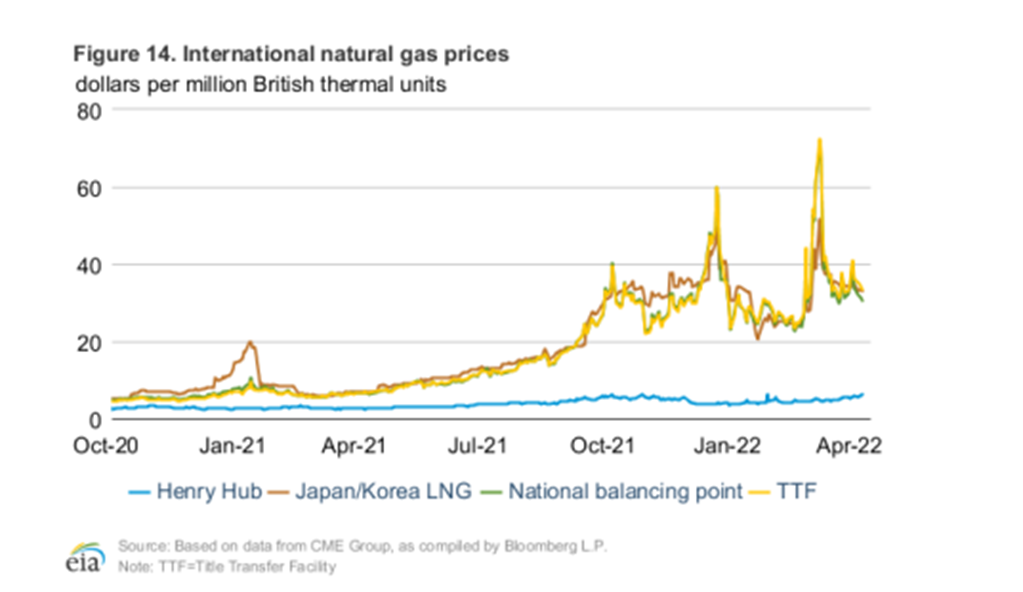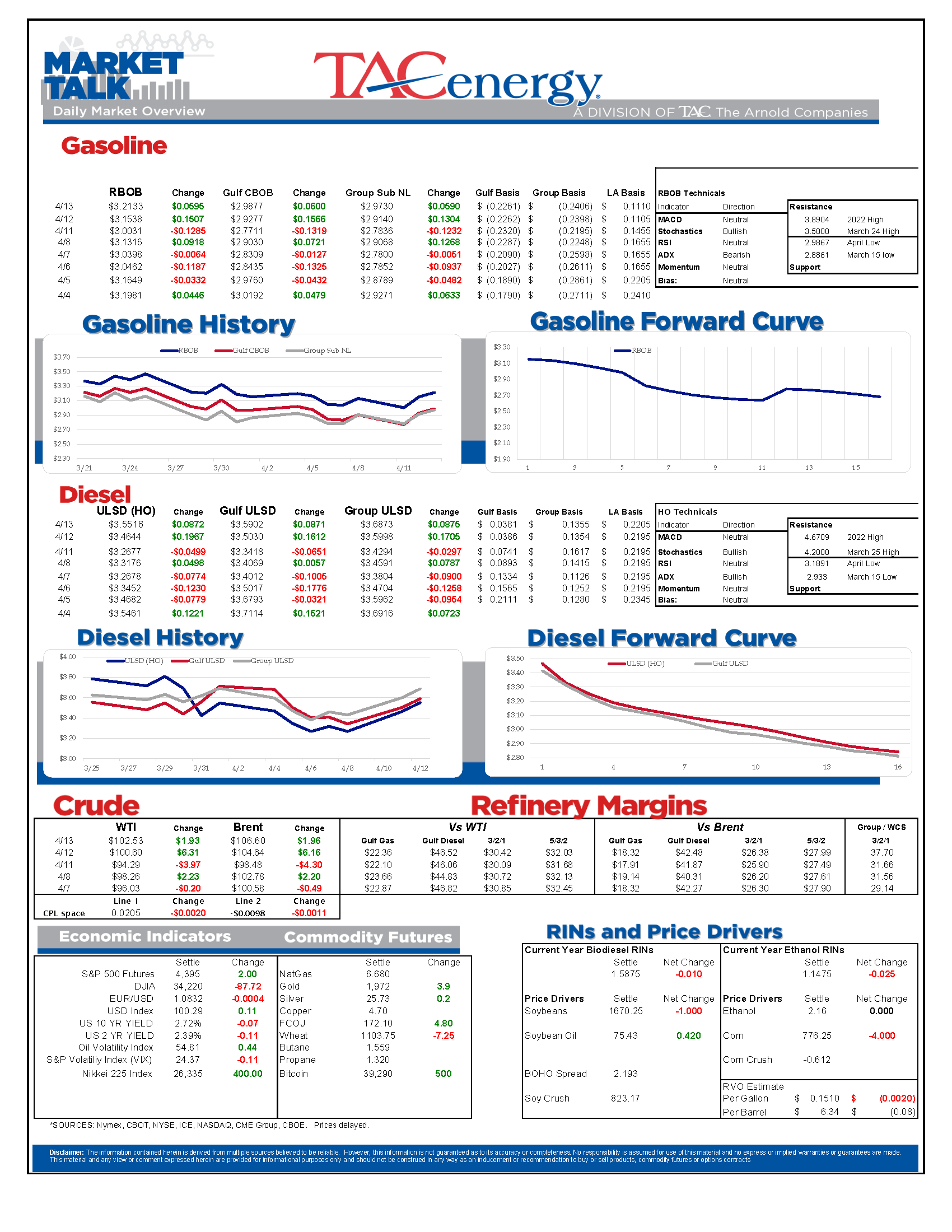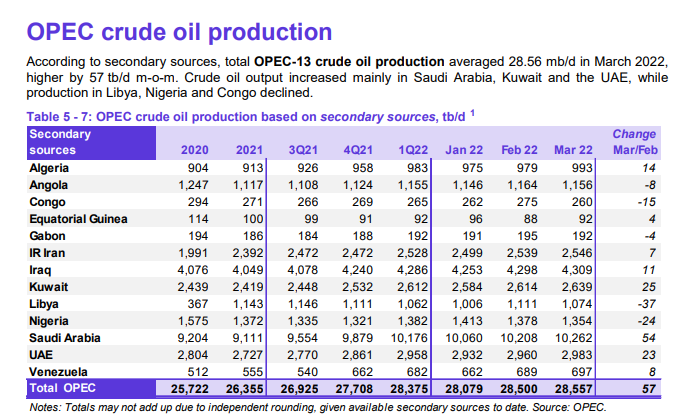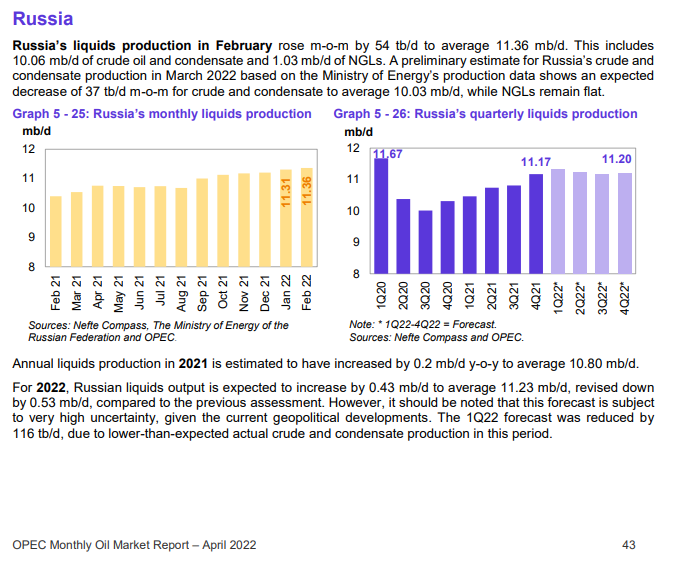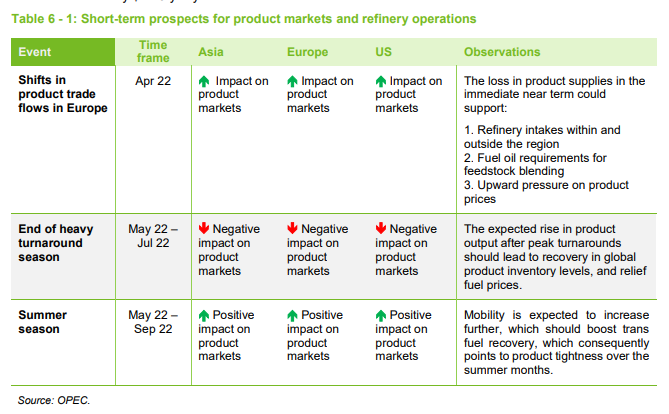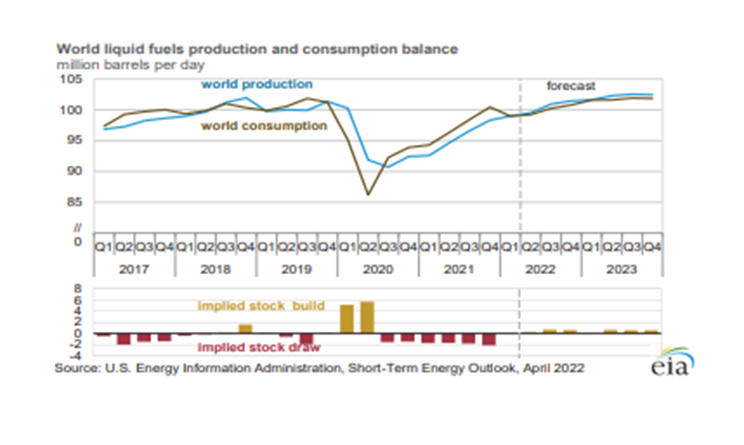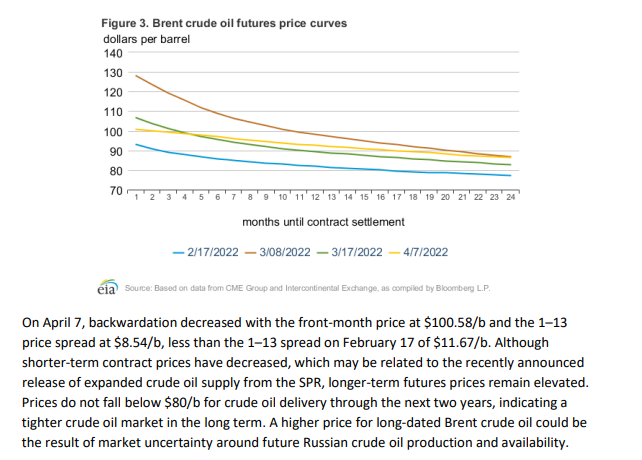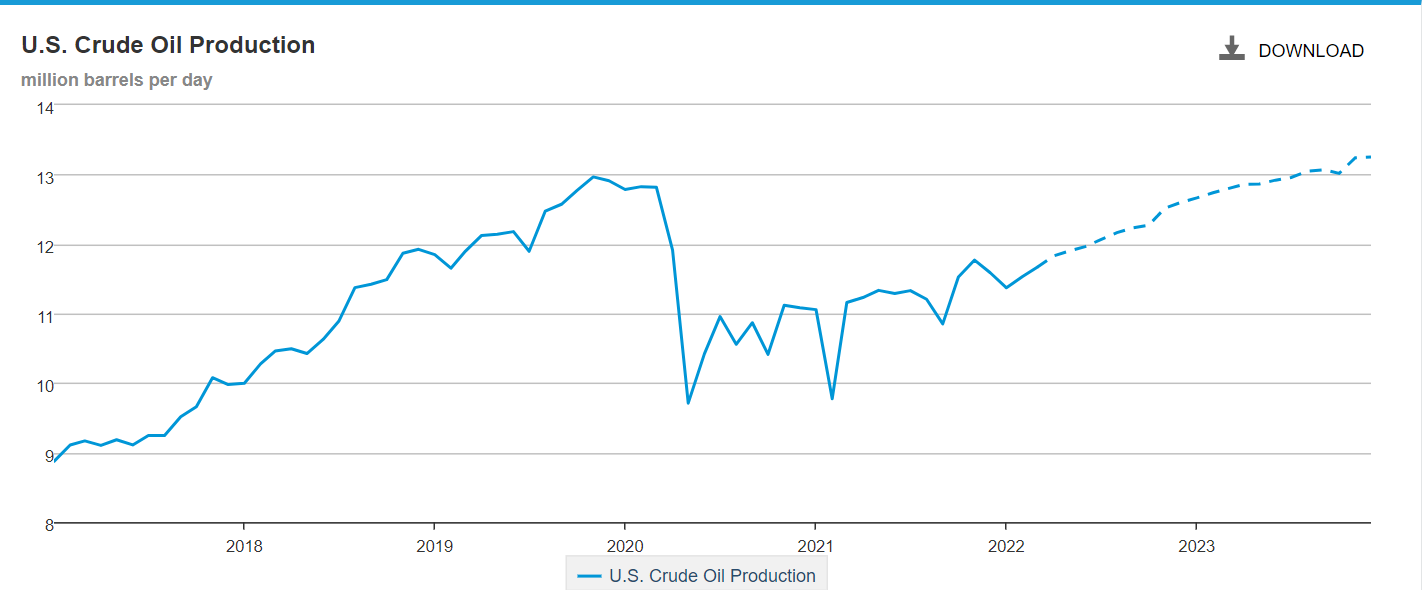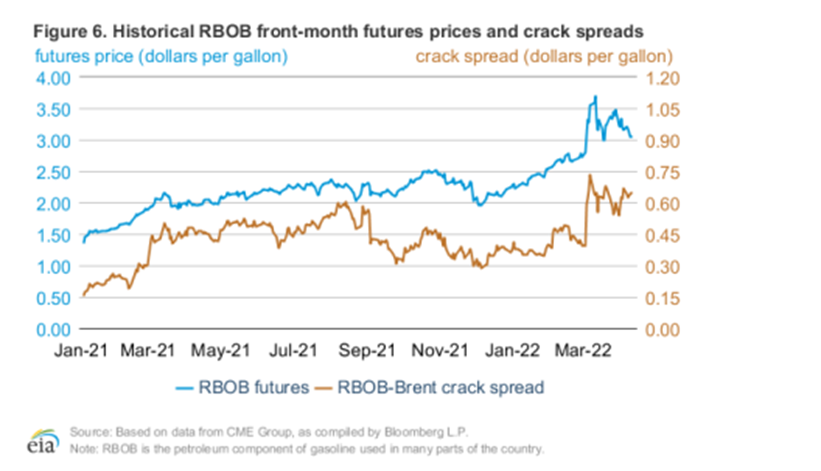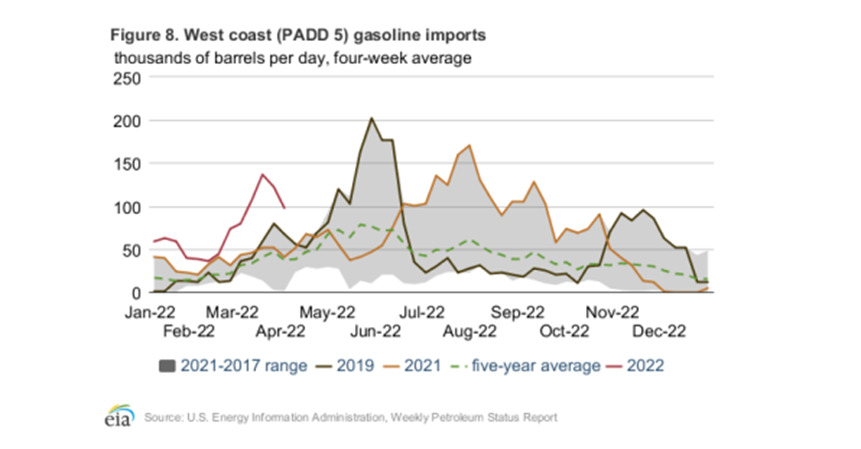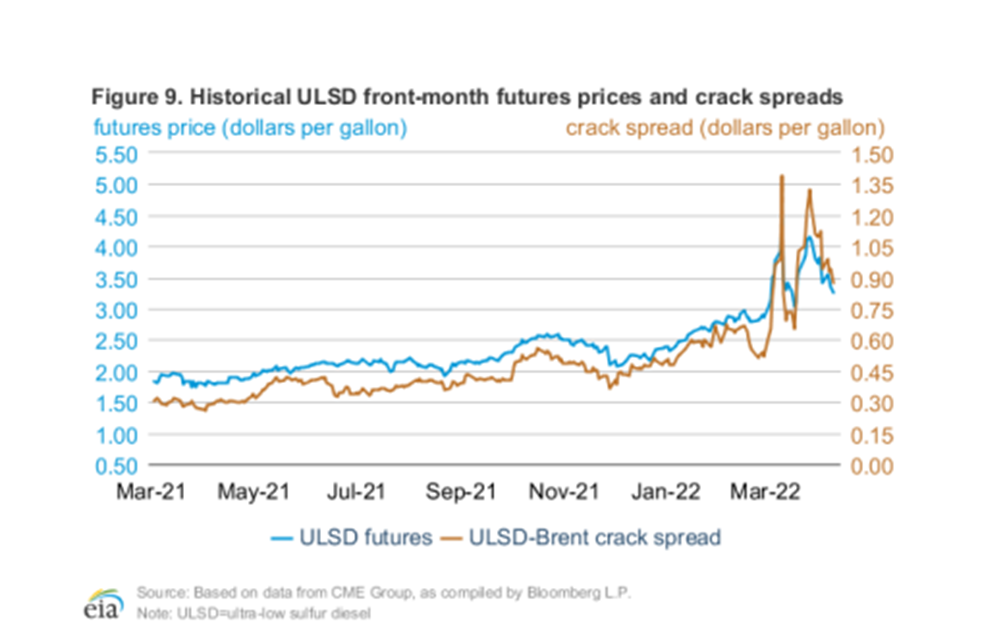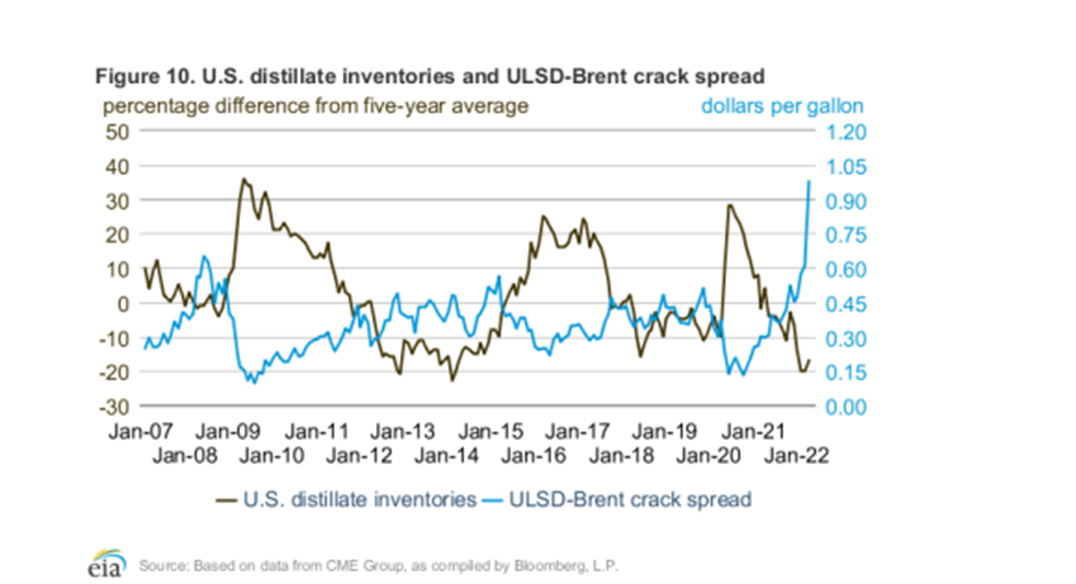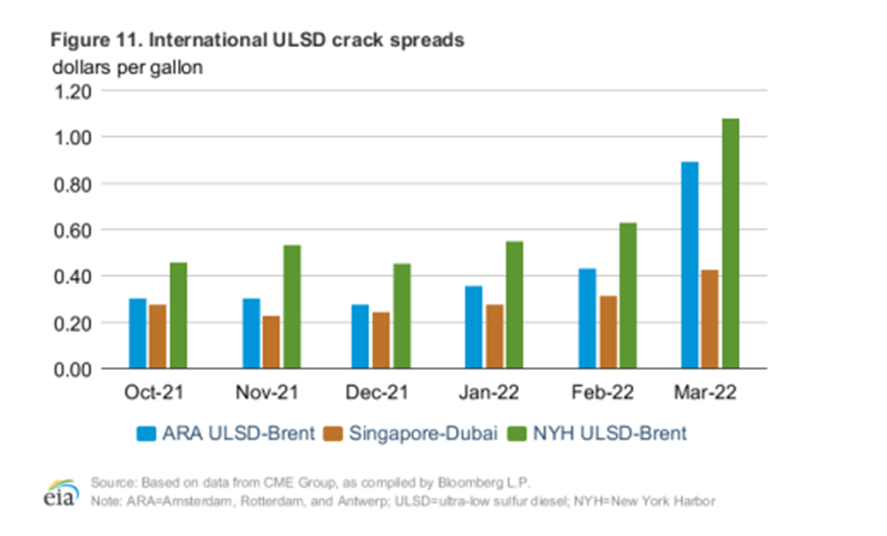The Big Bounce Continues For Energy Futures, With ULSD Prices Leading The Charge Again

The big bounce continues for energy futures, with ULSD prices leading the charge again, trading 36 cents above the lows set last Thursday. The rally in RBOB has been less impressive, but gasoline prices are still up more than 20 cents from Monday’s lows, keeping the door open for another push higher.
The monthly data deluge of monthly and weekly inventory reports that started yesterday is giving the world a harsh reminder that there just is no short term solution available to the energy supply crunch, and the charts continue to favor higher prices now that support held up once again.
The API reported large declines of around 5 million barrels for both diesel and gasoline stocks yesterday, while crude inventories were estimated to have a large increase of 7.7 million barrels.
OPEC’s oil production increased by 54mb/day in March, just a fraction of what the cartel was targeting as it continues its return from voluntary production cuts that started during the COVID demand collapse. The supply chain problems that seem to be hitting just about every industry these days, and the reality that oil production isn’t as simple as its often made out to be, seem to be at play here as well, with several countries seeing declines in their production even as they’re trying to increase. Make no mistake, if these countries were able to cash in on prices north of $100 they would be doing it - as OPEC used to have to work hard to keep these countries from over-producing their agreed-upon quotas in prior years.
The OPEC monthly report also dropped its forecast for both global supply and demand for the balance of the year due to the war in Ukraine. It’s worth noting that despite the reduced supply estimates, non-OPEC oil production is still expected to grow this year, just not by enough to offset the expected loss of Russian supply. The report also highlighted the surge in refining margins caused by the tight diesel (particularly Jet Fuel) markets around the world. See the charts below for more from the OPEC report.
The DOE/EIA’s monthly report also revised its global demand estimates lower as the economic models it uses predict a slow-down in GDP growth as a result of the war, and the high prices for food and energy that are coming along with it. The report predicts that US retail gasoline prices will stay at record highs this summer, but below the levels we saw in 2014 after adjusting for inflation, before declining through 2023. The EIA’s forecast suggests that it will still take another year for US oil producers to reach pre-COVID levels, but that global production increases will be enough to build inventories every quarter through next year, despite the assumed drop in Russian supplies.
You think our inflation is bad? Take a look at the last chart from the EIA’s STEO report below showing international natural gas prices, which are running 7-10 times the prices for natural gas in the US.
Click here to download a PDF of today's TACenergy Market Talk.
Latest Posts
Energy Markets Rally Again Thursday After A Choppy Wednesday Session
Week 16 - US DOE Inventory Recap
Energy Markets Trading Quietly In The Red As Ethanol Prices Rally To Five-Month High
The Struggle For Renewable Producers Continues As A Rapid Influx Of Supply And Crashing Credit Prices Make Biodiesel
Social Media
News & Views
View All
Energy Markets Rally Again Thursday After A Choppy Wednesday Session
Energy markets are trying to rally again Thursday after a choppy Wednesday session. RBOB gasoline futures are leading the push higher, on pace for a 3rd consecutive day of gains after finding a temporary floor Tuesday and have added 12 cents from those lows.
Equity markets are pointing sharply lower after a weak Q1 GDP estimate which seems to have contributed to a pullback in product prices over the past few minutes, but don’t be surprised if the “bad news is good news” low interest rate junkies start jumping in later on.
The DOE’s weekly report showed sluggish demand for gasoline and diesel, but inventory levels in most markets continue to follow their typical seasonal trends. Refinery runs held fairly steady last week with crude inputs down slightly but total gross throughputs up slightly as most facilities are now back online from a busy spring maintenance season and geared up for peak demand this summer.
Propane and propylene exports spiked to a record high north of 2.3 million barrels/day last week, which demonstrates both the US’s growing influence on global product markets, and the steady shift towards “other” products besides traditional gasoline and diesel in the level of importance for refiners.
The EIA acknowledged this morning that its weak diesel consumption estimates reflected the switch to Renewable Diesel on the West Coast, although they did not provide any timeline for when that data will be included in the weekly survey. The agency acknowledged that more than 4% of the total US consumption is now a combination of RD and Biodiesel, and that number is expected to continue to grow this year. This morning’s note also suggested that weak manufacturing activity was to blame for the sluggish diesel demand across the US, while other reports suggest the freight recession continued through Q1 of this year, which is also contributing to the big shift from tight diesel markets to oversupplied in several regions.
Valero kicked off the Q1 earnings releases for refiners with solid net income of $1.2 billion that’s a far cry from the spectacular earnings north of $3 billion in the first quarter of 2023. The refining sector made $1.7 billion, down from $4.1 billion last year. That is a pattern that should be expected from other refiners as well as the industry returns to a more normal market after 2 unbelievable years. You wouldn’t guess it by looking at stock prices for refiners though, as they continue to trade near record highs despite the more modest earnings.
Another pattern we’re likely to see continue with other refiners is that Renewable earnings were down, despite a big increase in production as lower subsidies like RINs and LCFS credit values sting producers that rely on those to compete with traditional products. Valero’s SAF conversion project at its Diamond Green joint venture is progressing ahead of schedule and will give the company optionality to flip between RD and SAF depending on how the economics of those two products shakes out this year. Valero also shows part of why refiners continue to disappear in California, with operating expenses for its West Coast segment nearly 2X that of the other regions it operates in.

Week 16 - US DOE Inventory Recap

Energy Markets Trading Quietly In The Red As Ethanol Prices Rally To Five-Month High
Energy markets are trading quietly in the red to start Wednesday’s session after a healthy bounce Tuesday afternoon suggested the Israel-Iran-linked liquidation had finally run its course.
There are reports of more Ukrainian strikes on Russian energy assets overnight, but the sources are sketchy so far, and the market doesn’t seem to be reacting as if this is legitimate news.
Ethanol prices have rallied to a 5-month high this week as corn and other grain prices have rallied after the latest crop progress update highlighted risks to farmers this year, lower grain export expectations from Ukraine, and the approval of E15 blends this summer despite the fact it pollutes more. The rally in grain and renewables prices has also helped RIN values find a bid after it looked like they were about to test their 4-year lows last week.
The API reported small changes in refined product inventories last week, with gasoline stocks down about 600,000, while distillates were up 724,000. Crude oil inventories increased by 3.2 million barrels according to the industry-group estimates. The DOE’s weekly report is due out at its normal time this morning.
Total reported another upset at its Port Arthur refinery that’s been a frequent flier on the TCEQ alerts since the January deep freeze knocked it offline and damaged multiple operating units. This latest upset seems minor as the un-named unit impacted was returned to normal operations in under an hour. Gulf Coast basis markets have shrugged off most reports of refinery upsets this year as the region remains well supplied, and it’s unlikely we’ll see any impact from this news.
California conversely reacted in a big way to reports of an upset at Chevron’s El Segundo refinery outside of LA, with CARBOB basis values jumping by more than a dime. Energy News Today continued to show its value by reporting the upset before the flaring notice was even reported to area regulators, proving once again it’s ahead of the curve on refinery-related events. Another industry news outlet meanwhile struggled just to remember where the country’s largest diesel seller is located.
Click here to download a PDF of today's TACenergy Market Talk
